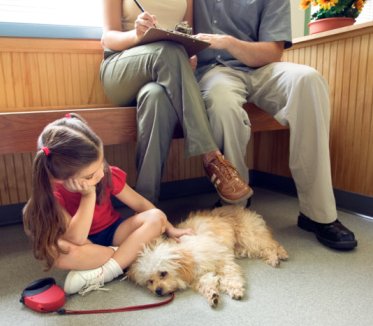




“Is my dog sick?” “Should I visit the vet?” These are questions that most dog owners will ask at some point. Learn how to examine your dog if you think he’s sick.
First – get to know what is normal for your dog. Each is an individual and you know your pet better than the veterinarian. Some of the observations might make you uncomfortable but they are important. They may even make the difference between life and death for your dog.
“Timely veterinary care is key. Delaying vet care is going to take its toll on your animal’s body, making the illness or condition more difficult, and more costly to cure or treat,†explained Dr. Michael Levine, DVM, a practicing vet and professor of veterinary medicine.
Taking a dog’s temperature can be done rectally. A normal, healthy dog’s body temperature will be between 100.5 to 102.5 degrees Fahrenheit. A temperature outside of this range is an indicator of canine illness and therefore warrants a trip to the vet’s office.
Checking a dog’s gum color can also offer insight into whether a dog is ill. Normal gums should be a shade of pink. Abnormal gums, which are white, grey, blue or yellow in color, can be indicative of internal bleeding, anemia, or a disruption of normal blood flow, which prevents proper oxygenation of dog’s blood or results in a loss of blood or red blood cells (anemia.)
In addition, owners should know what’s normal for their pet in terms of their general appearance and the above-mentioned values. Dr. Levine concluded, “If you don’t know what your dog’s gums look like when he’s healthy, you’re going to have a difficult time determining if your dog is ill. Know what’s normal for your pet and detecting changes will be much easier.â€
Pet owners can also look for signs of pain and distress in a dog. Symptoms include drooling, panting and restlessness. A dog’s heart rate can be a good indicator of distress and pain. The normal canine heart rate varies depending on the size and age of the dog, but a consistently quick or slow pulse indicates distress and/or illness.
If your puppy or dog shows any of the following signs, be prepared to call your veterinarian.